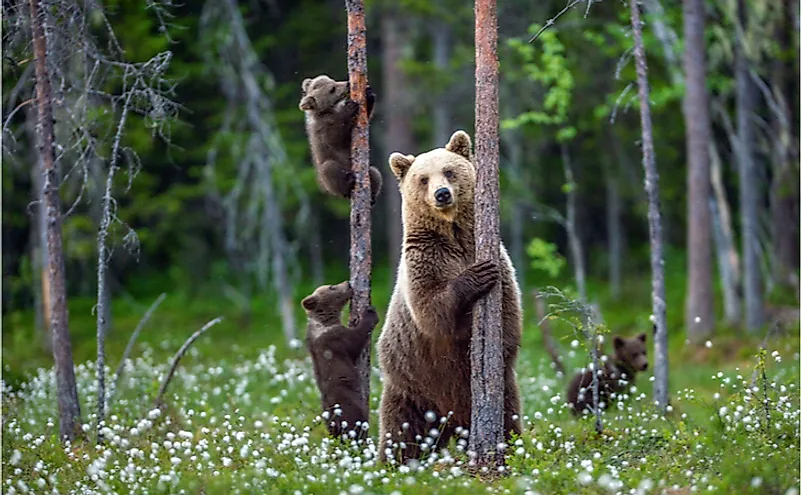What Do Grizzly Bears Eat?

The grizzly bear is the traditional name of the North American brown bear which is divided into distinct populations, sometimes regarded as separate subspecies like Kodiak bears of Alaska. The grizzlies are large and vary in color from dark brown to light tan. They have short round ears, dished face, and a large hump on their shoulders, which is a mass of muscle attached to their backbone. It is this muscle that gives the bear the extra strength for digging. Grizzly bears have exceptionally long claws on their forefeet which also gives them additional ability to dig for food and their dens. Grizzlies weigh about 700 pounds. A fully grown male bear can weigh as much as 1,700 pounds while an adult female grizzly bear can weigh as much as 800 pounds.
Diet Of Grizzly Bears
Grizzly bears are omnivorous although their digestive system is that of a carnivore. They consume a wide range of food items constituting both plants and animals. They prey on mammals such as bison, bighorn sheep, mule deer, white-tailed deer, caribou, elk, and sometimes black bears. They always choose calves or injured animals as opposed to a healthy adult. Grizzlies also feed on fish such as bass, trout, and salmon. It has also been observed that grizzly bears which have access to protein-rich diet, particularly in the coastal regions are typically larger compared to individual grizzlies found inland. They also scavenge for food and often consume carcasses left by other animals.
The Alaskan And Canadian Grizzly Bears
The Alaskan and Canadian grizzly bears are relatively larger compared to grizzly bears found in Yellowstone National Park. The reason for the difference in size lies on diet. Grizzly bears found in the Yellowstone National Park consume mainly tubers, the nuts of whitebark pine, different rodents, grass, army cutworm moths, and scavenging for carrion. On the other hand, the grizzly bears in British Columbia and Alaska consume a diet with high-fat content such as salmon and they could weigh as much as 1200 pounds. These bears also supplement their diet with berries and sedge grass. They also congregate around areas where salmons have to leap waterfalls or obstacles, and they always fight for the best fishing grounds.
Yellowstone Grizzly Bears
The grizzly bears in the Yellowstone ecosystem are opportunistic omnivores, and they consume a considerable diversity of animal and plant species. According to the United States Geological Survey (USGS), grizzly bears in the Yellowstone area have been found to consume about 266 species of plants, which account for 67% of their diet. They also consumed about 37 different species of invertebrates which account for 15% of their diet and about 34 different species of mammals which account for 11% of their diet. These bears also consume fungi, birds, fish, amphibians, algae, and soil. Their frequently consumed diet includes graminoids, ants, nuts of the whitebark pine, clovers, and dandelion.
Conservation Of Grizzlies
The federal government has listed grizzlies as a threatened species. They have been over hunted, and there are less than 15,000 grizzly bears in the US south of Canada. In Alaska, there are about 31,000 grizzly bears. The National Wildlife Federation is one of the largest private, not-for-profit conservation organizations advocating for the conservation of grizzly bears and to have a place for bears to roam and coexist with humans.











